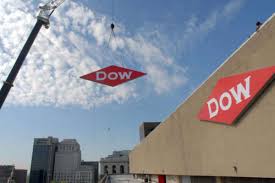‘It Was Excessive Confidence.’ Dow Jones Industrial Average Plunges 1,100 in Biggest One-Day Selloff Ever

U.S. stocks plunged the most in 6 1/2 years, with the Dow Jones Industrial Average sinking more than 1,100 points, as the equity selloff reached a fever pitch amid rising concern that inflation will force interest rates higher. Treasuries rallied and gold rose on haven demand.
Volatility roared back into American equity markets, as the S&P 500 Index sank 4.1 percent to wipe out its January gain and turn lower on the year. The index capped its worst day since the U.S. lost its pristine credit rating, topping the rout that followed China’s shock devaluation of the yuan, the Brexit selloff and jitters heading into the presidential election. Trading volume was almost double the 30-day average. All but two stocks in the broad gauge declined.
“This is classic risk off that may not end any time soon,” says Win Thin, head of emerging-market currency strategy at Brown Brothers Harriman.
Selling accelerated shortly after 3 p.m. in New York, with the Dow sinking more than 800 points in a matter of 15 minutes only to snap back. The blue-chip index ended lower by 4.6 percent — its steepest drop since August 2011, and is also lower for the year. The Cboe Volatility Index more than doubled to its highest level in 2 1/2 years.
Treasuries popped, sending the 10-year yield down more than 10 basis points, and gold future pushed higher. The dollar stabilized while the yen advanced.
While Friday’s market rout came amid U.S. wage data on Friday that pointed to quickening inflation, which would lead to higher rates and, in turn, rising borrowing costs for companies, the selling Monday came amid few major data points.
“I think sentiment was a little too optimistic,” said Brad McMillan, chief investment officer for Commonwealth Financial Network. “What was driving the market up in January? It wasn’t the fundamentals, as good as they were, it was excessive confidence.”
Elsewhere, oil extended declines after U.S. explorers raised the number of rigs drilling for crude to the most since August. Copper climbed the most in a week. Bitcoin slid below $ 7,000.
Terminal users can read more in our markets blog.
Here are some key events scheduled for this week:
Monetary policy decisions are due in Australia, Russia, India, Brazil, Poland, Romania, the U.K., New Zealand, Serbia, Peru and the Philippines. Earnings season continues with reports from Bristol-Myers Squibb, Ryanair, Toyota Motor Corp., BNP Paribas, BP, General Motors, Walt Disney, SoftBank, Sanofi, Philip Morris, Total, Tesla, Rio Tinto, L’Oreal and Twitter. Dallas Fed President Robert Kaplan and New York Fed President William Dudley are among policy officials due to speak in Frankfurt and New York.
These are the main moves in markets:
Stocks
The S&P 500 fell 4.1 percent as of 4 p.m. New York time. The Dow fell 1,178 points, or 4.6 percent, while the Nasdaq averages were off by more than 3.7 percent. The Stoxx Europe 600 Index declined 1.6 percent , hitting the lowest in almost 12 weeks with its sixth consecutive decline. The MSCI Emerging Markets Index lost 1.9 percent.
Currencies
The Bloomberg Dollar Spot Index gained 0.3 percent. The euro decreased 0.5 percent to $ 1.2405. The British pound declined 0.8 percent to $ 1.4001, the weakest in almost two weeks. The Japanese yen gained 0.3 percent to 109.79 per dollar.
Bonds
The yield on 10-year Treasuries fell four basis points to 2.81 percent. Germany’s 10-year yield declined three basis points to 0.74 percent, the largest decrease in almost six weeks. Britain’s 10-year yield declined two basis points to 1.558 percent.
Commodities
West Texas Intermediate crude dipped 2.2 percent to $ 64.01 a barrel. Gold advanced 0.1 percent to $ 1,334.76 an ounce. Copper gained 1.8 percent to $ 7,169 per metric ton.
